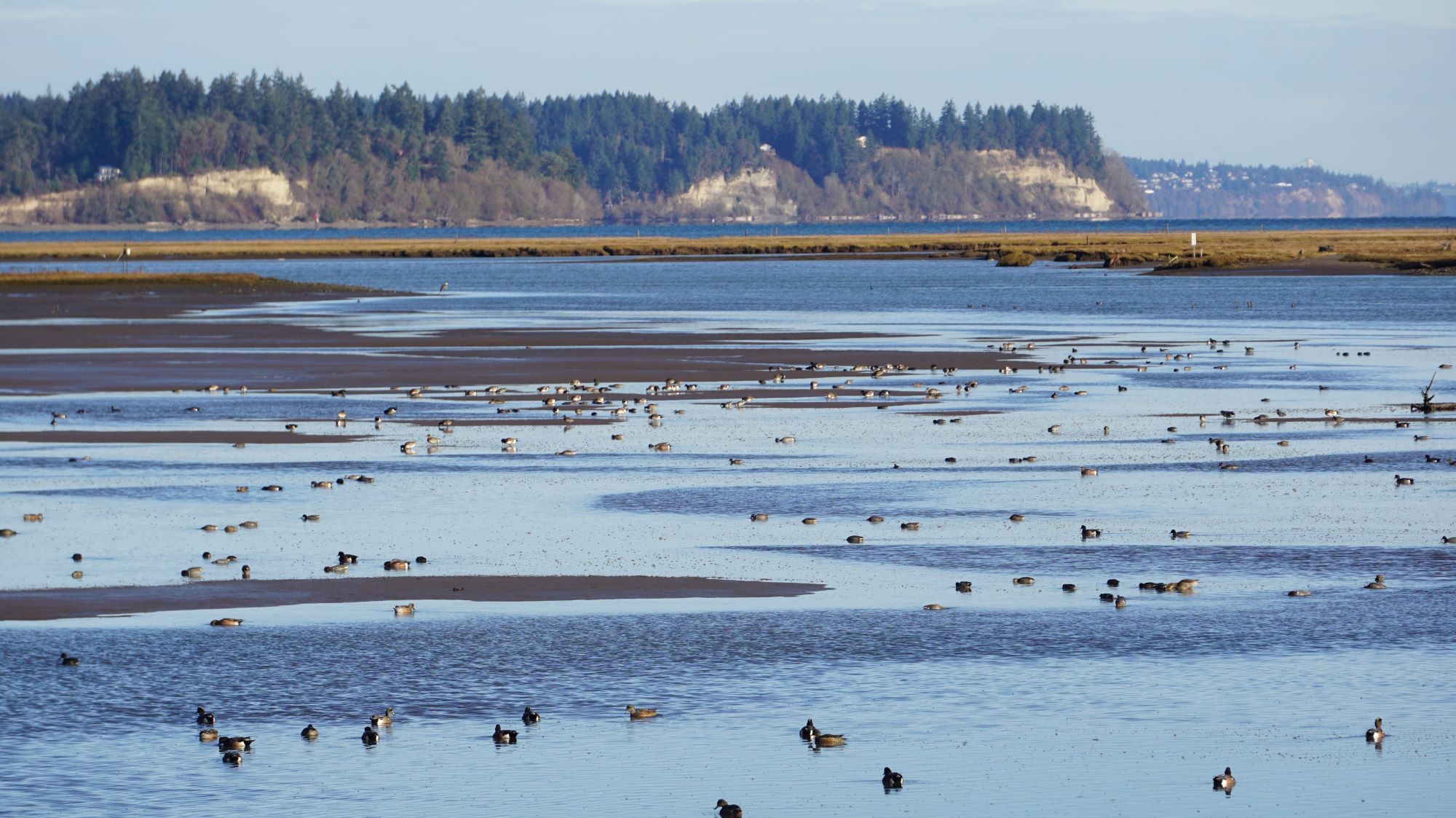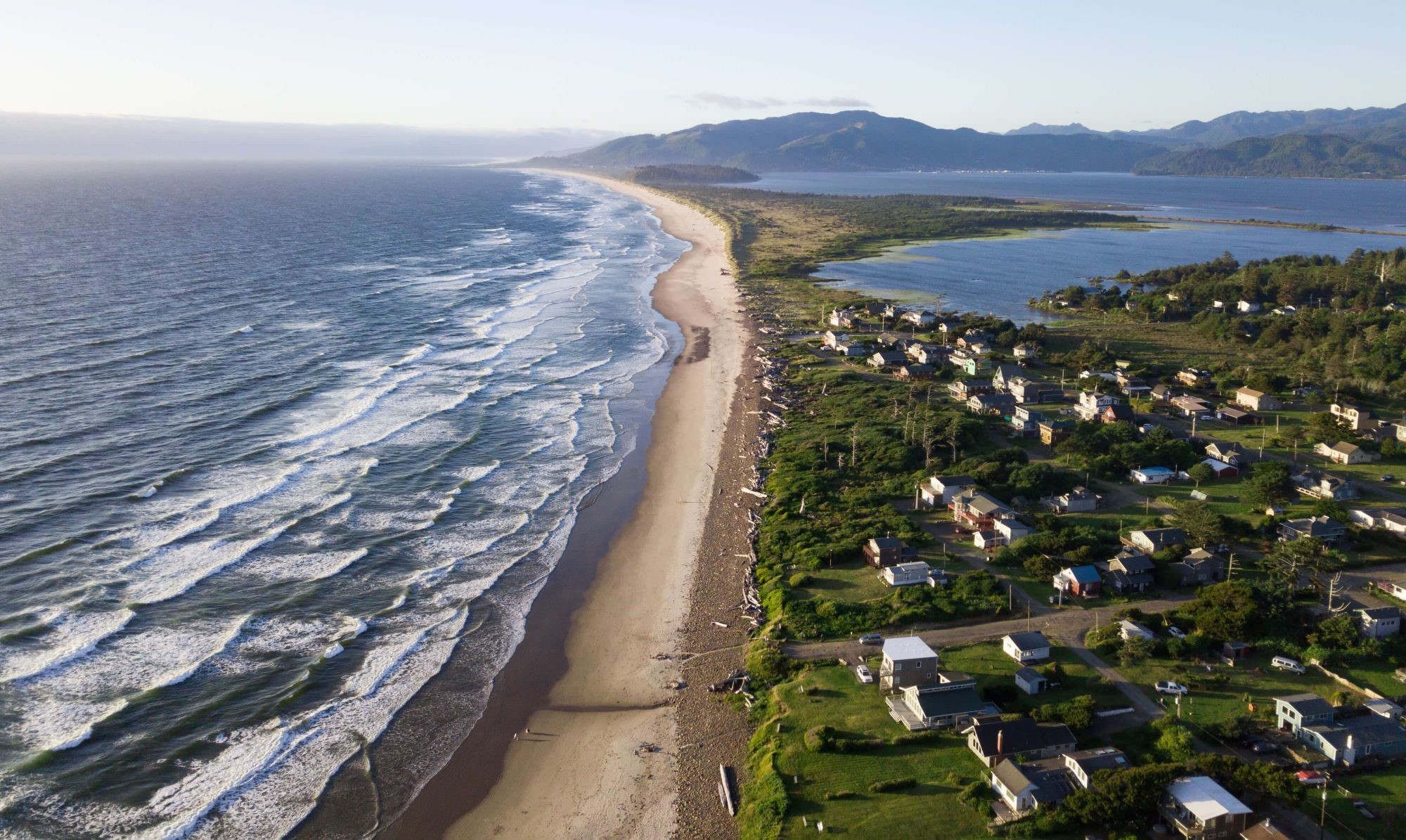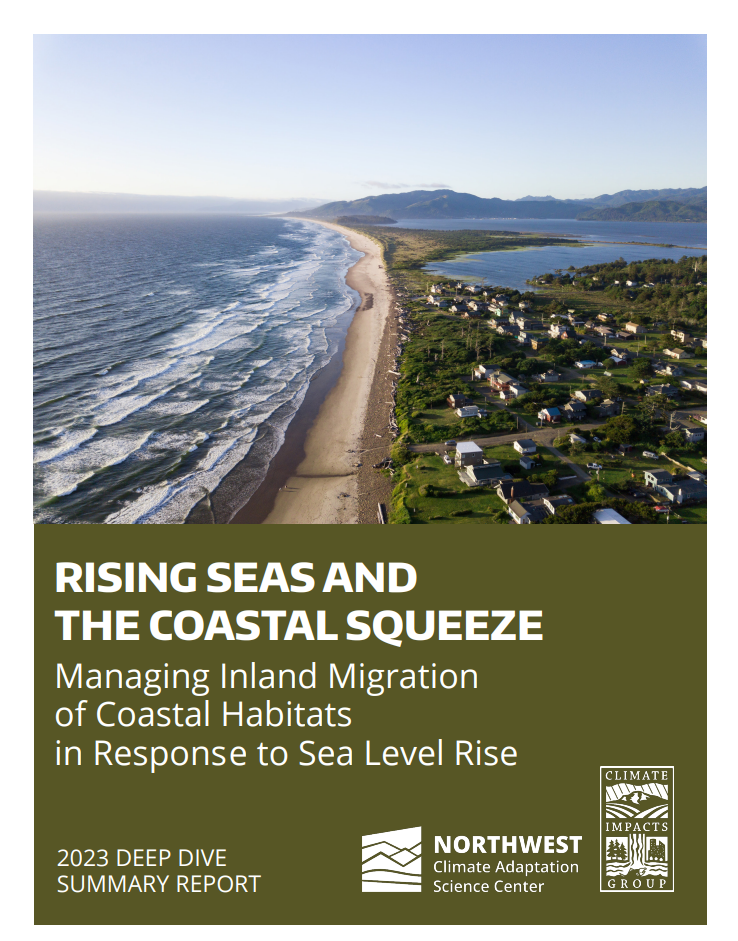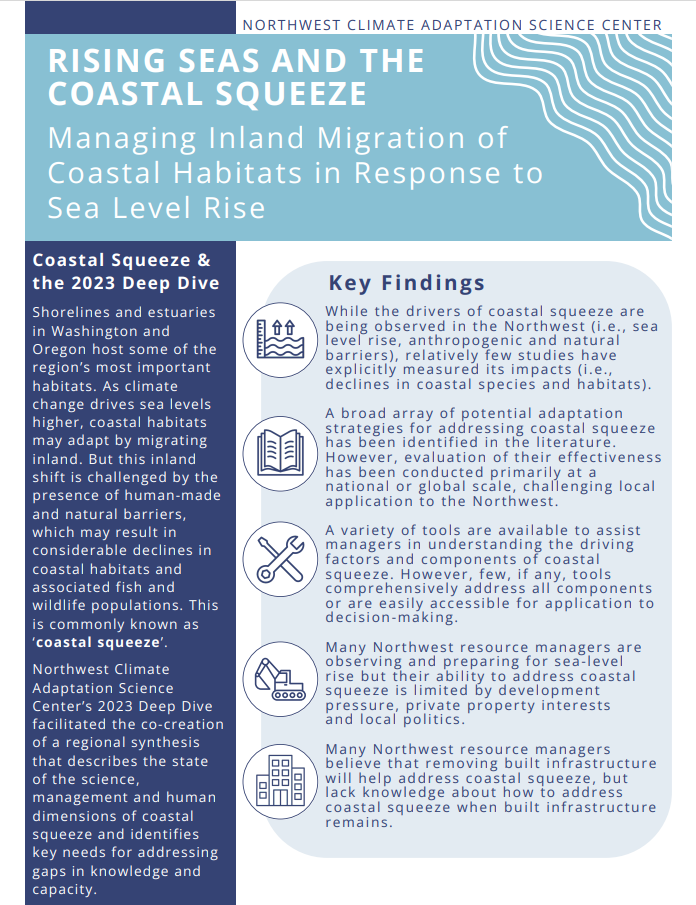The Northwest Climate Adaptation Science Center (NW CASC) works to develop science to help fish, wildlife, water, land, and people adapt to climate change in the Northwest. Each year, they organize an actionable science Deep Dive into an emerging climate risk, bringing together scientists, researchers, conservationists, resource managers, and policy partners. The goal of these gatherings is to address a specific climate risk by compiling what is known about the issue, identifying knowledge gaps and research needs, and identifying opportunities to advance adaptation by linking science and action.
Coastal squeeze occurs when coastal habitats are pushed inland by climate-driven sea level rise, but this inland movement is obstructed by the presence of both human-made and natural barriers.
What is 'Coastal Squeeze'?
This year, the theme was ‘coastal squeeze’. Coastal squeeze occurs when coastal habitats are pushed inland by climate-driven sea level rise, but this inland movement is obstructed by the presence of both human-made and natural barriers. Trapped on both sides, this results in shrinking coastal habitats and declines in the species that rely on them – including birds, fish, and other wildlife.
Shorelines and estuaries in the Pacific Northwest host some of the region’s most critically important habitats and are used by millions of migratory birds each year to breed, rest, refuel, and overwinter. They’re also some of the most developed areas in the region, with the continued expansion of infrastructure such as sea walls, roads, buildings, and ports restricting the ability of coastal habitats to adjust to sea level rise by moving inland.
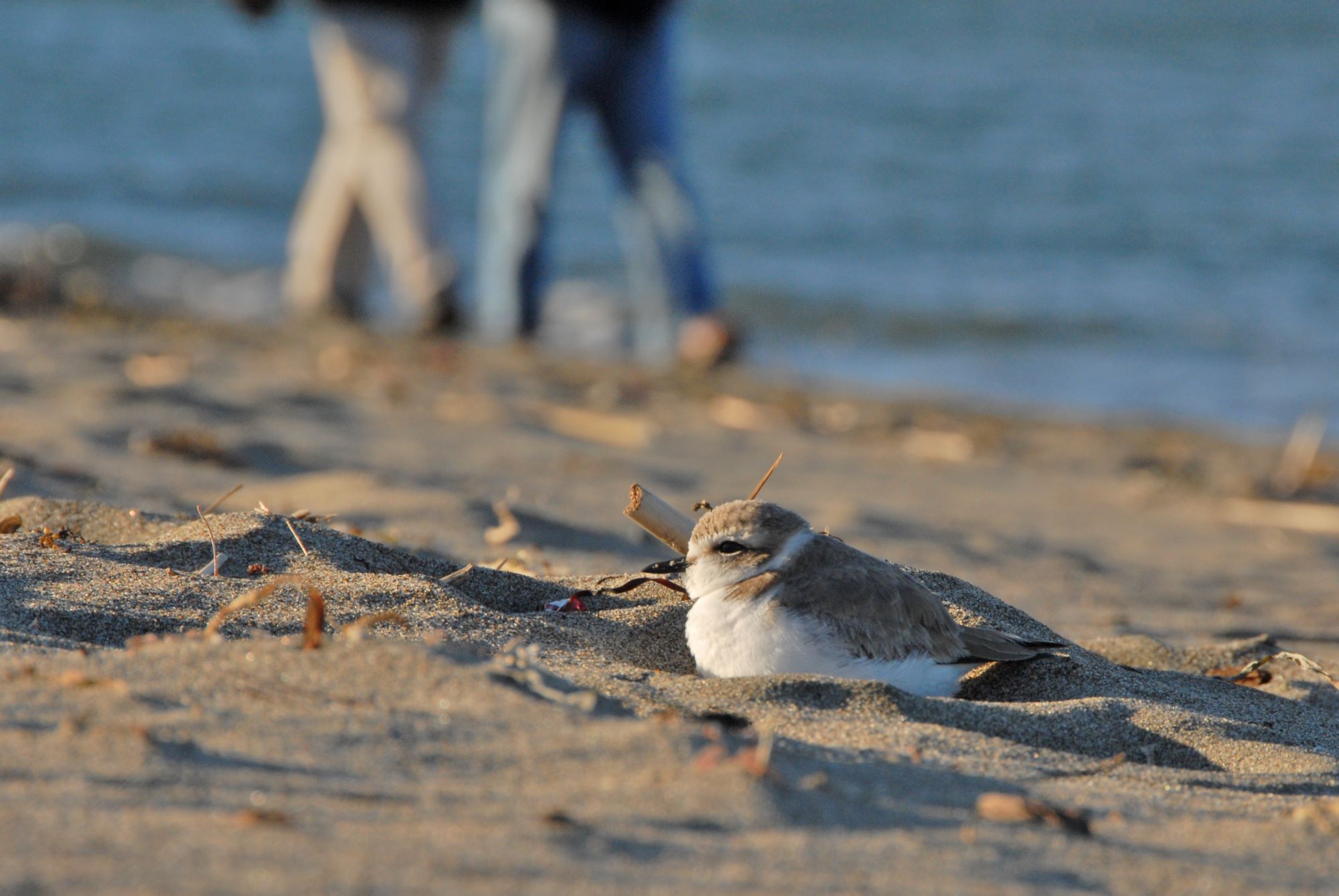
The Knowledge Gap
There’s a need to better understand how to manage this issue and to understand what policies are needed to protect both people and coastal habitats, to bolster their resilience to climate change. To help meet this need, the 2023 NW CASC Deep Dive aimed to synthesize the state of knowledge around the current science, management practice, and human dimensions of coastal squeeze, and to identify gaps in knowledge and capacity, through a series of virtual working groups and workshops. By bringing together a diverse group of over 100 experts in the field, the goal of the Deep Dive was to enhance the region’s capacity and community of practice for effective management of coastal squeeze.
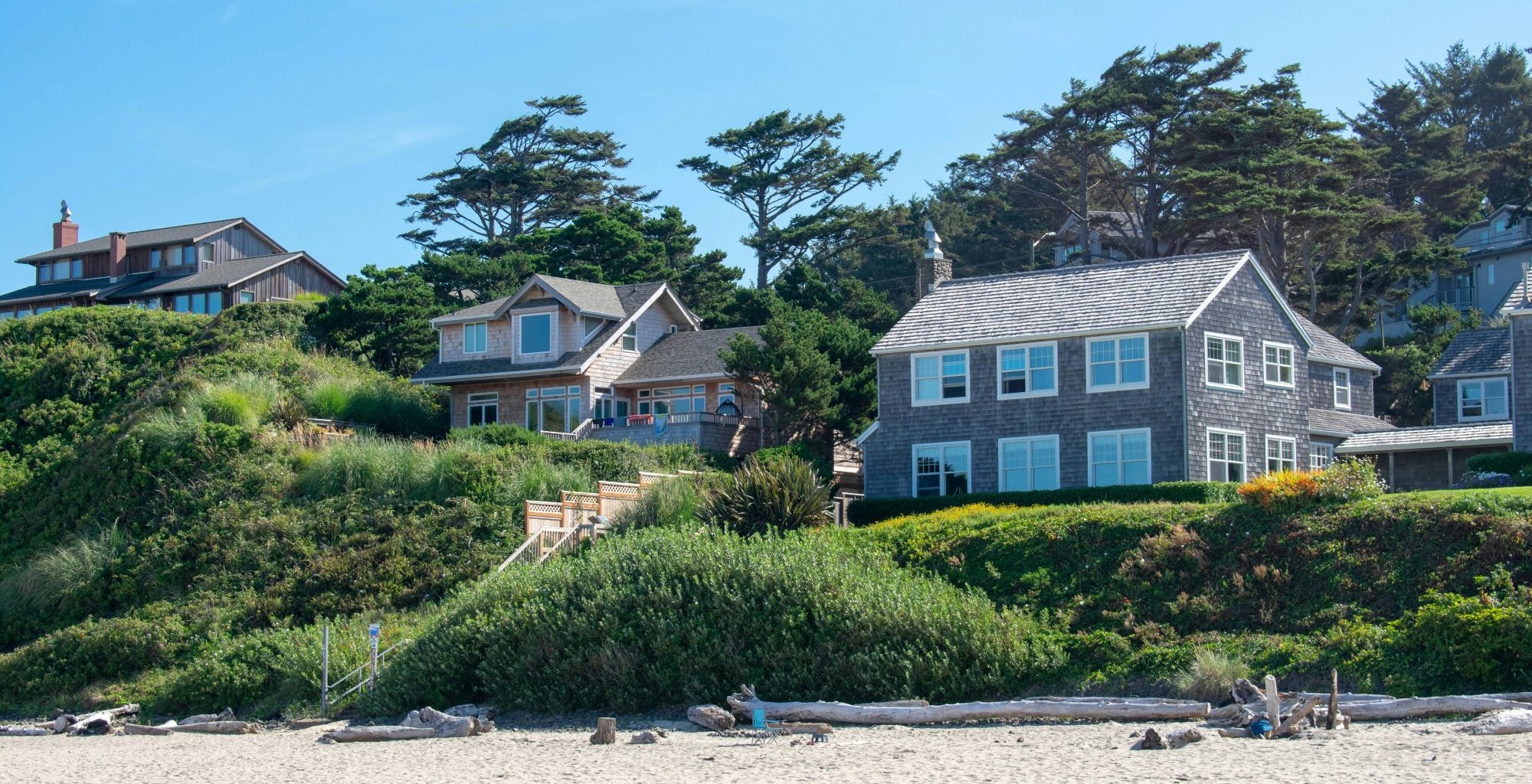
The Outcomes
Products from the Deep Dive include a Summary Report, Key Findings Overview, three synthesis documents addressing Biophysical Knowledge, Management & Practice, and Policy & Human Dimensions, a Tools Database, and Example Project Ideas. The team launched these products in October at the NW Climate Conference, sharing how these new tools and materials can be used by managers and scientists. These products and tools, and more information about the Deep Dives and NW CASC, can be found on their website.
Summary Report
The Summary Report describes the key findings and actionable science agenda, and a description of the Deep Dive process and participants who informed the findings.
Key Findings Overview
This document highlights the high-level takeaways and outcomes from the process.
Deep Dive Synthesis Reports
Together, the three synthesis reports describe what each of the three working groups used to justify their results and key findings. This includes relevant citations, survey results, and evidence supporting both their recommended actions and findings.
Tools Database
The Tools Database describes over 30 different tools that may be useful to those interested in coastal squeeze management and research. This includes interactive sea level rise, habitat, and focal species maps, ArcGIS online maps for wetlands facing tidal inundation, sea level rise projections and models, and a collection of plans and other relevant written resources.
Example Project Ideas
The 2023 Deep Dive workshop participants generated this list to encourage research that addresses key gaps and needs.
